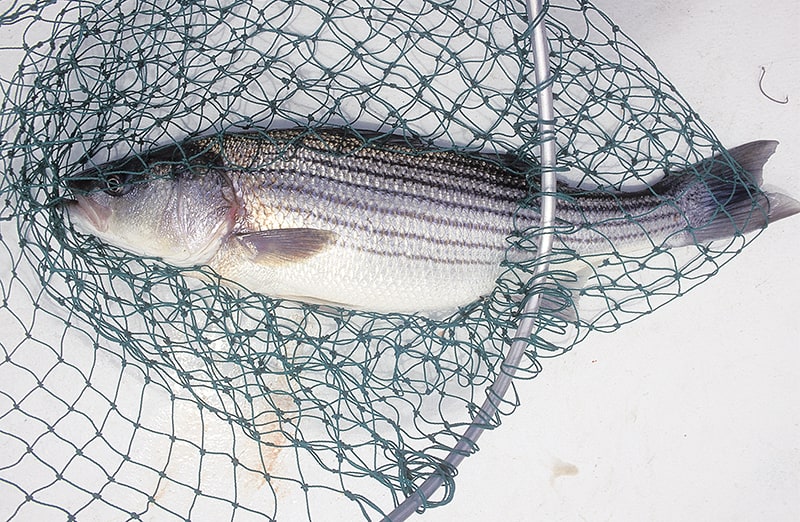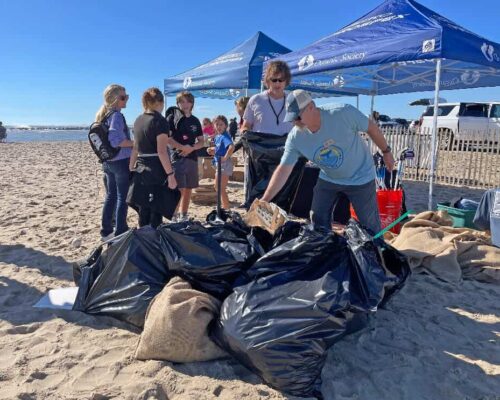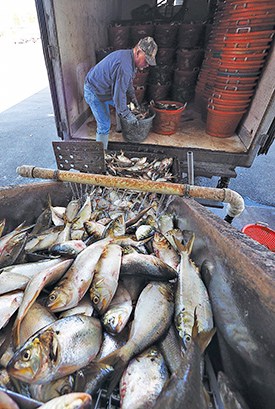By Karl Blankenship, Bay Journal News Service
East Coast fishery managers are taking comments on a range of options that would slash striped bass harvests by 18% compared with 2017 levels as part of an effort to halt overfishing of the iconic Chesapeake Bay species.
The action comes in the wake of a stock assessment released earlier this year that found striped bass — long considered a management success story — were being overharvested and their coastwide population was well below targets established by the Atlantic States Marine Fisheries Commission.
The commission, which represents state fishery managers from along the coast as well as federal agencies, expects to adopt new harvest levels at its October meeting. Those changes would be implemented by states next year.
Michael Armstrong of the Massachusetts Division of Marine Fisheries, who chairs the commission’s Striped Bass Management Board, called the proposed reductions “a critical first step to stem overfishing as quickly as possible and begin efforts to rebuild the biomass.”
After a population collapse in the 1980s, sharp catch reductions — including a catch moratorium — were credited with helping the stock recover, reaching a recent peak around 2003. Since then, the population has gradually declined. The cause seems to be a combination of high fishing pressure and a number of years with poor reproduction.
To stem the decline, the commission in 2015 imposed a 25% catch reduction along the coast, and a 20.5% reduction in Bay harvests.
But a new stock assessment released earlier this year concluded that action had not halted the decline of striped bass. In fact, the harvest had been at or above the overfishing threshold for 13 of the last 15 years, prompting the need for additional action.
Among the options under consideration:
- Maintaining the status quo
- Imposing an 18% catch reductions for both recreational and commercial harvests, including options that allow for changes in minimum size limits, trophy seasons and other changes that would meet the overall goal.
- Enacting a 1.8% reduction in the commercial fishery and a 20% reduction in the recreational fishery. The rationale is that the commercial fishery is controlled by a quota that keeps catches relatively steady, whereas the recreational fishery is governed by size and catch limits, which results in more variability from year to year.
- Requiring the use of circle hooks to reduce mortality of fish that are caught and released. About 9% of striped bass die after being released, and a recent analysis found that discard mortality actually exceeded the number of fish kept by recreational fishermen.
The commercial harvest accounts for only 10% of the total striped bass harvest, though it tends to be concentrated in the Chesapeake. ASMFC figures show that 60% of the total commercial harvest, measured by weight, comes from the Bay.
Recreational anglers account for about 90% of the total fishing-related mortality, including fish that die after they are caught and released. But recreational fishing is also hugely valuable to the coastal economy, with anglers spending more than $6.3 billion annually, according to a study released this year.
States are expected to present the options for adjusting the striped bass harvest during public hearings in August and September, with the commission taking final action in October.
If enacted, next year’s harvest cuts will still leave the striped bass population below target levels for years to come, and fishery managers said further actions could be needed.
But on Aug. 8 the commission decided to postpone consideration of a broader overhaul to its striped bass management structure until its meeting next spring.
“This is the first step in a longer process to restore the iconic striped bass fishery in the Chesapeake Bay and along the entire Atlantic Coast,” said Chris Moore, senior regional ecosystem scientist with the nonprofit Chesapeake Bay Foundation.
“Unfortunately, more detailed work to begin rebuilding the striped bass stock was delayed by ASMFC, which postponed decisions on a larger overhaul of the fishery management plan until next year.” Moore said.
ASMFC expects to have a document setting forth options in more detail on its website, (click here) by Aug. 19th. Public comment will be accepted until 5 p.m. on Sept. 27, 2019.



